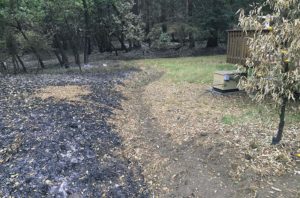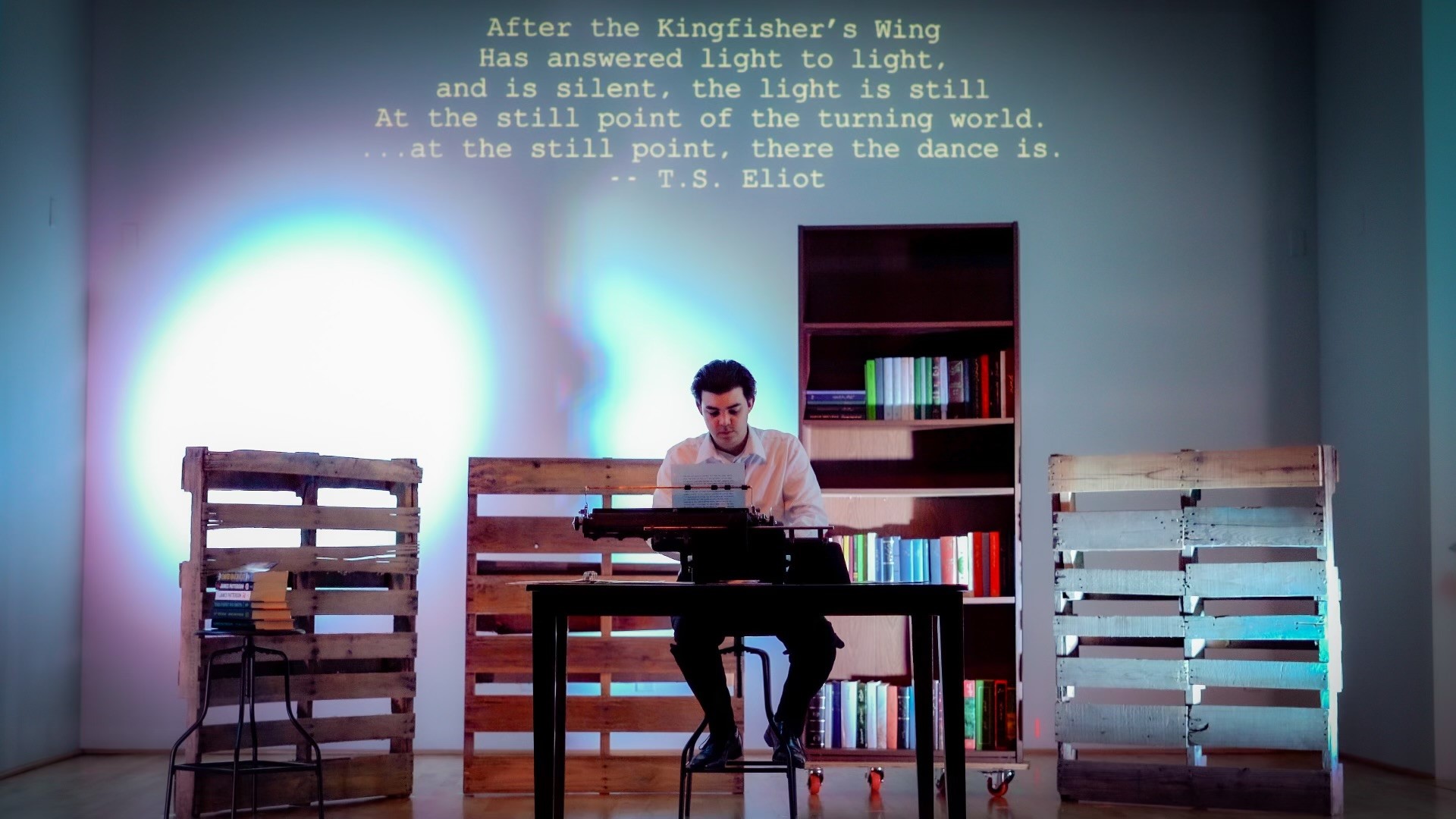
Wildfires create transition for Baha’i learning center in California


It took only a few days in August for a wildfire to write an abrupt turning point in the story of Bosch Baha’i School, 45 years after its home was established in the wooded mountains near Santa Cruz, California.A few cherished structures remained standing thanks to the heroism of firefighters and volunteers. Others were left in ashes and rubble amid charred redwoods. Vehicles and equipment sustained extensive damage.
Resident staff members were safely and swiftly relocated — some of them ahead of time because of bad air quality. Many Baha’is across the West and the country anxiously monitored the news.
While the National Spiritual Assembly of the Baha’is of the United States released the first details a few days after fire swept through the area, it took weeks before the extent of damage began to be understood.

By mid-September, says Allen Lu, Bosch’s administrator, staff members had opportunities to grieve with neighbors over the loss of homes. “We hear from others who are slowly returning to their homes as the repopulation process unfolds,” Lu shares. Even through the pain, “it is beautiful how, out of these moments of anxiety and crises, bonds of friendships are strengthened through experiencing the common emotions and feelings.”
Since 1975, thousands have spent time learning, relaxing and solidifying friendships at this center of learning. This year, the COVID-19 pandemic reduced the onsite staff. Training and educational activities have been conducted online.
The National Assembly and its Office of Education and Schools have begun a long process of determining what to preserve on the property and how to keep it
protected.
An even longer time, said Jeff Albert, education and schools director, will be needed to start writing a new chapter, “reimagining the use of this learning space as an effective tool of [Baha’i activities] in the region.”
A midnight call to evacuate
Wildfires started erupting Aug. 16 as lightning struck Northern California thousands of times from virtually dry thunderstorms. The nearly 600 resulting fires came to be known in media as the “wildfire siege.”
Power went out at Bosch that day, says Shaidu Kiven, the center’s operations manager. And smoke from a distance could be smelled. Electric and internet service was back up on Aug. 18 so the mountainside’s residents could catch up on news.
It was little comfort, though, and the staff began preparing to leave. By afternoon, Kiven says, “the whole sky was blanketed by smoke and the sun was red in color. There were helicopters flying all over the place with balloons [dropping fire retardant], trying to keep the fire under control.”
Lu was returning to the campus that day from a trip to San Francisco. On his drive south along the coastal highway into Santa Cruz County, “I could see on my left spots of fires burning the hillside, firefighters stationed along the coast, and a helicopter dropping retardant in the distance before returning to a field nearby.” The smoke only got stronger as he turned up the road leading to the Bosch grounds in the Bonny Doon area. The atmosphere glowed orange and ash was “gently falling like snow.”
It was nearly midnight when a county supervisor called to inform Lu of the order to evacuate. Bosch had an evacuation plan already in place, so “I made sure all staff evacuees knew where they were to go and that their hosts knew they were coming,” Lu says.
He packed some key items, turned off lights and propane tanks, and was the last of the five staff members to leave the site with their families that night. On his way to Santa Clara, he gave the fire department details of the evacuation.
Looking ahead from the disaster
After early damage reports came in, the National Assembly informed the Baha’i community in an Aug. 24 letter that “the property sustained severe damage to a number of structures; many were a total loss, including the cabins. However, several other buildings, including most of the major structures, appear to have been spared.” The letter asked for prayers to protect firefighters and others in harm’s way.

“Bosch has for several decades served as a vital center of learning and inspiration,” the letter continued. “We have no doubt that, once the present difficulties are overcome, it will once again become a place radiating the light of the unifying teachings of our Faith and a source of spiritual power for the entire region.”
In the wake of an early September visit to view the extensive losses to property, equipment and plant life, Albert says, “I can only stand in awe of God’s grace to this hallowed spot and the dedicated, unnamed firefighters who were able to hold back further destruction to the many buildings that they defended with their lives.” He acknowledges “countless prayers of those around the country and world” for their service and their protection.
Conversations with experts reveal serious tests ahead, he adds. Winter storms are expected to bring “extensive erosion, trees falling and mudslides along the mountain and limited road entries and exits.”
The Bonny Doon community is among over 70,000 people evacuated as a result of this one fire, which destroyed thousands of structures, Lu notes. Maintaining relationships with neighbors is one of the most important activities, and he has been on the phone frequently. “The unity in grief and loving support is something to acknowledge and thank God for,” he says.





